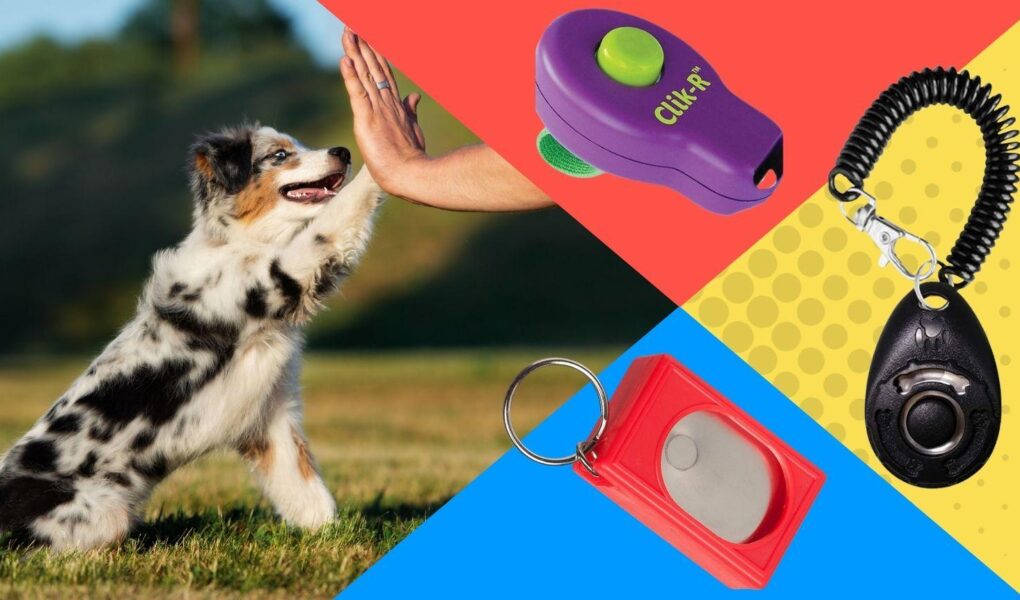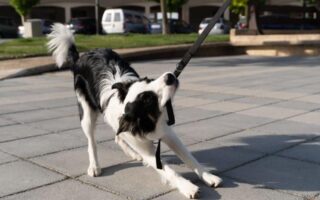Unlocking Communication: The Best Dog Clickers for Training Success
In the world of canine companionship, effective communication between you and your furry friend is paramount. Traditional training methods often relied on an array of vocal commands and hand signals, but the introduction of clicker training has revolutionized the way we bond with our dogs. At the heart of this innovative approach lies a simple yet powerful tool: the dog clicker. In this article, we’ll explore the best dog clickers available on the market, highlighting their features, benefits, and how they can enhance your training sessions. Whether you’re a seasoned trainer or a pet owner looking to deepen the connection with your pup, discover how the right clicker can turn training into a joyful and rewarding experience for both you and your four-legged companion.
Table of Contents
- Exploring the Science Behind Clicker Training
- Key Features to Look for in an Ideal Dog Clicker
- Top Recommendations for Versatile Clicker Training Tools
- Enhancing Your Training Routine: Tips and Tricks for Success
- Q&A
- Closing Remarks
Exploring the Science Behind Clicker Training
Clicker training is grounded in the principles of operant conditioning, a behavioral science concept that explains how behaviors are learned and modified through reinforcement. This method utilizes a small handheld device that emits a distinct “click” sound to signal to a dog that it has successfully performed a desired behavior. The sound serves as a positive marker that can help clarify communication between the owner and the pet. By pairing the click with a reward, like treats or praise, dogs quickly learn to associate the noise with good outcomes, enhancing their motivation to repeat the actions that earned them the click.
Understanding the science behind this technique can provide dog owners with the tools to effectively teach and reinforce a range of behaviors. As dogs learn to respond to the clicker, they develop a more nuanced understanding of commands, leading to a more harmonious relationship with their trainers. Key aspects of this training method include:
- Consistency: Using the clicker every time a dog performs the desired action.
- Timing: Clicking immediately after the behavior to establish a clear link.
- Gradual Progression: Starting with simple commands and gradually increasing complexity.
Key Features to Look for in an Ideal Dog Clicker
When selecting the perfect dog clicker, you should prioritize its sound quality. An ideal clicker should produce a crisp, clear sound that grabs your dog’s attention without being startling. Options with adjustable volume allow you to customize the sound to suit different environments, making it versatile for training indoors or outdoors. Additionally, consider a clicker that offers a consistent click every time you press it; this reliability helps reinforce your dog’s learning and ensures that they associate the sound with positive reinforcement.
Another significant aspect to contemplate is the ergonomic design of the clicker. A model that fits comfortably in your hand can enhance your training experience, allowing for quick and easy clicking without fuss. Look for clickers with textured grips, which provide better control, especially during lengthy training sessions. some advanced clickers come with additional features, like built-in whistles or treat dispensers, which can streamline the training process. Here’s a quick comparison of popular clicker features:
| Feature | Benefits |
|---|---|
| Adjustable Volume | Customizable sound for varying environments. |
| Ergonomic Grip | Enhanced comfort and ease of use during training. |
| Multi-functional Tools | Whistles and treat dispensers for convenience. |
Top Recommendations for Versatile Clicker Training Tools
When it comes to effective clicker training for dogs, having the right tools can make all the difference. Here are some top recommendations that cater to different needs and preferences:
- Classic Clicker: Simple yet effective, this type features a reliable button that provides a clear auditory signal. Perfect for beginners.
- Multi-Functional Clicker: This option often combines a clicker with a whistle or other training aids, offering versatility for various training scenarios.
- Adjustable Sound Clickers: Ideal for sensitive dogs, these allow you to modify the volume of the click, making training more comfortable for your pup.
- Remote Clickers: These provide flexibility by allowing you to reward your dog from a distance, making them great for sports or outdoor training.
When choosing a clicker, considering the size and ergonomics is crucial for effective training. Below is a simple comparison that highlights some popular clicker options:
| Clicker Type | Main Feature | Best For |
|---|---|---|
| Classic Clicker | Basic sound | Beginners |
| Multi-Functional Clicker | Combines features | Versatile trainers |
| Adjustable Sound Clicker | Volume control | Sensitive dogs |
| Remote Clicker | Long-range use | Outdoor activities |
Enhancing Your Training Routine: Tips and Tricks for Success
To truly maximize the effectiveness of your training sessions with your dog, incorporating a quality clicker can make a significant difference. Here are some tips and tricks to enhance your training routine:
- Choose the Right Clicker: Opt for a clicker that feels comfortable in your hand and produces a clear sound. This will ensure that you’ll use it consistently during training.
- Timing is Everything: Click the moment your dog performs the desired behavior. This immediate feedback helps your dog make the connection between the action and the reward.
- Start Simple: Begin training with basic commands like “sit” or “stay” before progressing to more complex tricks. This helps maintain your dog’s interest and reinforces positive behavior efficiently.
- Consistency is Key: Use the clicker and treats in a consistent manner. Ensure that the clicker sound is always paired with a reward to reinforce good behavior.
| Behavior | Clicker Role | Reward |
|---|---|---|
| Sit | Immediate click upon sitting | Small treat |
| Stay | Click when the dog maintains position | Praise and petting |
| Come | Click when the dog arrives | Toy or treat |
In addition to these foundational techniques, it’s essential to keep your dog engaged and motivated throughout the training process. You can consider the following strategies:
- Mix Up Rewards: Occasionally change the type of reward from treats to playtime or toys. This variety can keep your dog eager and excited to learn.
- Short Training Sessions: Keep training sessions brief but frequent to maintain your dog’s focus and enthusiasm. Aim for 5-10 minute sessions several times a day.
- Practice in Different Environments: Gradually introduce training in various settings to help your dog generalize learned behaviors and adapt to distractions.
- Be Patient: Progress may take time, and it’s important to celebrate small victories. Patience will lead to a more successful training experience.
Q&A
Q&A: Finding the Best Dog Clicker for Your Training Needs
Q: What is a dog clicker and how does it work?
A: A dog clicker is a small handheld device that makes a distinct clicking sound when pressed. It’s widely used in dog training as a positive reinforcement tool. When training your dog, you press the clicker at the precise moment your pet performs the desired behavior. This sound signals to your furry friend that they did something right, and it’s often followed by a reward, like a treat or praise. The clicker helps to mark the exact moment of the behavior you want to reinforce.
Q: Why should I use a clicker over verbal commands?
A: While verbal commands can be effective, they can sometimes lack the consistency that a clicker provides. The sound of a clicker is immediate and distinct, which helps your dog understand exactly what action earned them a reward. Additionally, clickers can be more consistent than a person’s voice, which can vary in tone and volume depending on emotions or distractions. This clarity can enhance your dog’s learning experience, leading to faster and more reliable training outcomes.
Q: What features should I look for in a good dog clicker?
A: When searching for the best dog clicker, consider the following features:
- Sound Quality: A clear, sharp sound that stands out in your training environment is essential.
- Ergonomic Design: Look for a clicker that fits comfortably in your hand, making it easy to use during training.
- Durability: Choose a clicker made from sturdy materials to withstand regular use.
- Adjustable Volume: Some clickers allow you to adjust the loudness of the sound, which can be beneficial in different training situations.
- Additional Features: Some clickers come with built-in whistles or other training aids that might enhance your sessions.
Q: Are there different types of clickers available?
A: Yes, there are several types of clickers on the market. Standard clickers are the most common, but there are also:
- Inline Clickers: Attached to a finger strap for easy access.
- Wireless Clickers: Operated through remote control, which can be handy for distance training.
- Clickers with built-in whistles: Ideal for training activities that require voice commands along with clicks.
Choose one that best fits your training style and lifestyle!
Q: What are some tips for effectively using a dog clicker?
A: To maximize the effectiveness of your clicker training, consider the following tips:
- Timing is Everything: Always click at the exact moment your dog performs the desired behavior to create a strong association.
- Be Consistent: Use the clicker consistently for specific behaviors so your dog makes the connection between the click and the action.
- Pair with Treats: Initially, pair the sound of the clicker with a treat to reinforce the meaning of the click. Over time, your dog will learn that the click itself is rewarding.
- Keep Training Sessions Short: Dogs learn best in short, focused sessions of about 5-10 minutes to maintain their attention and enthusiasm.
Q: When can I start using a clicker with my puppy?
A: You can start using a clicker with your puppy as early as 8 weeks old. Puppies are naturally curious and ready to learn! Begin with simple commands like “sit” or “come,” and remember that patience and positive reinforcement will help your puppy become a well-trained companion.
Q: What if my dog doesn’t respond to the clicker?
A: If your dog isn’t responding to the clicker, it may be necessary to reassess your technique. Make sure your timing is correct and that you are rewarding immediately after the click. It’s also possible that your dog needs more motivation; try using higher-value treats or toys that excite them. If all else fails, consider consulting a professional dog trainer who can provide guidance tailored to your dog’s specific needs.
Q: Can I use a clicker for training other pets?
A: Absolutely! While clickers are most commonly associated with dog training, many other animals, including cats, birds, and even rabbits, can benefit from clicker training. The principles of positive reinforcement apply universally, so feel free to adapt your approach according to the species you are working with!
By considering these questions and answers, you can choose the best dog clicker and develop an enjoyable training experience for both you and your canine companion. Happy training!
Closing Remarks
As we conclude our exploration into the world of dog clickers, it’s clear that these simple yet powerful tools can be game-changers in fostering effective communication between you and your furry friend. Whether you opt for a traditional handheld clicker or a more advanced model packed with features, the key is consistency and patience in training. Remember, the best dog clicker is not just about its design or functionalities, but how well it fits into your training routine and enhances your bond with your dog. So venture forth with enthusiasm, click away, and watch as your canine companion transforms into a well-mannered member of the family. Happy training!



